With Russia, China, and others maneuvering to take advantage of the global energy and cost-of-living crises, the world’s democracies can no longer ignore their chronic vulnerability to the weaponization of critical resources. Fortunately, to mitigate the threat, they do not need to reinvent the wheel.
COPENHAGEN – The old line that “history does not repeat itself, but often rhymes,” is an apt description of the evolving relationship between the West and its rivals. During the Cold War, the Soviet Union was a global superpower, owing to its military prowess. Today, Russia’s armed forces appear to be in a dismal state, but the country has become an energy superpower that can use its vast natural-gas reserves as a weapon. Similarly, today’s standoff between the West and Russia over Ukraine echoes the Cold War confrontation between authoritarianism and democracy.
With winter looming, the Kremlin’s shutdown of gas flows to the European Union could have severe consequences, triggering the biggest energy crisis in 50 years. Though increasing deliveries of gas from the United States, the United Kingdom, and Norway will help mitigate the EU’s dependence on Russian supplies in the short run, it is not a long-term solution.
The weaponization of energy resources underscores the need for a new kind of alliance among the world’s democracies. At the Baltic Sea Energy Security Summit in Denmark two months ago, Germany, Poland, Lithuania, Latvia, Estonia, Finland, Sweden, and the European Commission offered a preliminary blueprint for what closer energy coordination might look like. All the countries in attendance signed a declaration committing them to increase their combined offshore wind-energy capacity by almost sevenfold over the next eight years. By 2030, offshore windfarms in the Baltic Sea region alone should be capable of producing 19.6 gigawatts per year, enough to meet the electricity demands of 28.5 million European homes (roughly equivalent to the combined number of households in all the Baltic Sea countries except Germany and Russia).
The summit was a historic political step, demonstrating that the geopolitics of energy is on the cusp of a major shift. Over the last decade, the costs of wind and solar energy have fallen below that of fossil fuels in most countries. The rapid growth of renewable energy will have two profound consequences. First, fuel-exporting countries’ ability to wield energy resources as a weapon will be weakened. Second, as the geopolitical importance of fuel resources diminishes, the importance of critical raw materials such as rare-earth elements, minerals, and metals will increase.
Over the last two decades, China has secured global dominance over the extraction and refining of minerals and metals. Today, China mines 58% and processes 85% of global rare-earth elements, giving it control over key parts of the supply chains needed to build wind turbines, solar panels, and electric vehicles. To put this position in perspective, Saudi Arabia’s share of global oil production stands at a mere 11%.
China’s dominance is a concern in and of itself; but to make matters worse, it has a track record of weaponizing its resources. In 2010, after a Chinese trawler collided with a Japanese coastguard vessel in the waters around the disputed Senkaku Islands, China halted its exports of rare-earth elements to Japan. In response, Japan took steps to reduce its dependence on China, including by working with mining companies to find new sources of the same materials, and by building its domestic refining capacity.
Europe, the US, and other democracies should heed the lessons of the 2010 Senkaku Islands incident and begin forging a new alliance to secure the supply of energy and critical raw materials. We already know that such mission-oriented alliances work: NATO has been an effective bulwark of democracy, free trade, and security for many decades; and the International Energy Agency – created by OECD members following the 1973 oil shock – has offered a potent defense against OPEC’s weaponization of oil.
A new energy and raw materials alliance could start by including Japan, Australia, New Zealand, South Korea, and those Latin American democracies that support a rules-based global order. Following the IEA model, it would develop a joint analytical capacity to produce regular forecasts of critical raw-material supplies and demand for them. And just as IEA members hold emergency oil reserves equivalent to at least 90 days of net oil imports, members of the new alliance would keep stockpiles of strategically important raw materials.
The alliance would also set standards for the quality of refined critical raw materials and for sustainable, ethical mining practices. Such standards are the most effective way to reform resource extraction in developing countries, where operations are often marred by environmental degradation and inhumane labor conditions.
Finally, members of the alliance would insist on a market-based international trading system for critical raw materials through the G7, the G20, and at the World Trade Organization. They would coordinate and promote research aimed at diversifying demand for minerals. And they would create new public-private partnerships to build a pipeline of forthcoming extraction and refining projects.
In addition to powering the green transition, critical raw materials and energy resources could become a source of peace, cooperation, and stability. By building on the lessons from the 1973 oil shock, we can ensure that history doesn’t repeat itself. That outcome would be another tragedy, not a farce, as Karl Marx believed. Avoiding it is possible only if the world’s democracies come together to do what is needed to prevent further weaponization of essential economic goods.



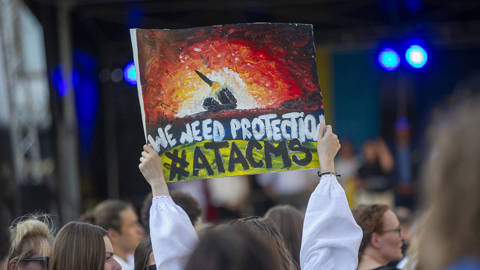
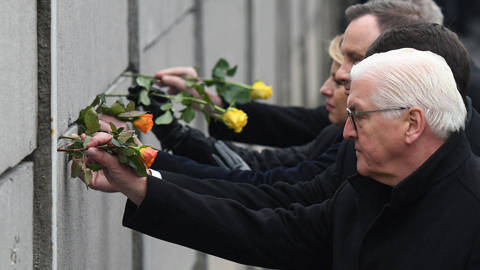
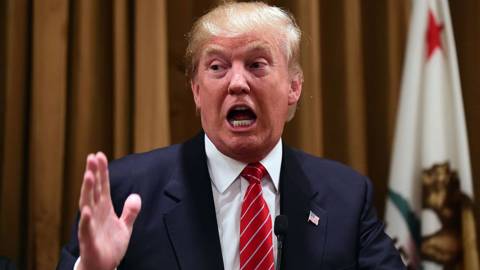
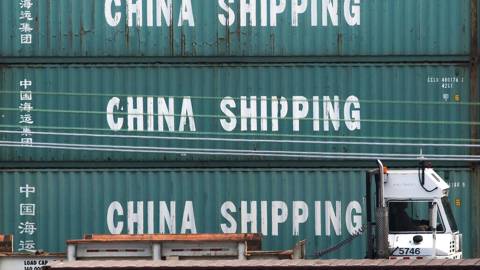


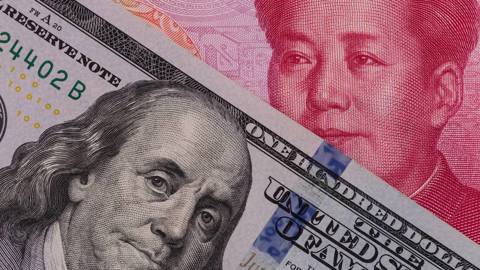
COPENHAGEN – The old line that “history does not repeat itself, but often rhymes,” is an apt description of the evolving relationship between the West and its rivals. During the Cold War, the Soviet Union was a global superpower, owing to its military prowess. Today, Russia’s armed forces appear to be in a dismal state, but the country has become an energy superpower that can use its vast natural-gas reserves as a weapon. Similarly, today’s standoff between the West and Russia over Ukraine echoes the Cold War confrontation between authoritarianism and democracy.
With winter looming, the Kremlin’s shutdown of gas flows to the European Union could have severe consequences, triggering the biggest energy crisis in 50 years. Though increasing deliveries of gas from the United States, the United Kingdom, and Norway will help mitigate the EU’s dependence on Russian supplies in the short run, it is not a long-term solution.
The weaponization of energy resources underscores the need for a new kind of alliance among the world’s democracies. At the Baltic Sea Energy Security Summit in Denmark two months ago, Germany, Poland, Lithuania, Latvia, Estonia, Finland, Sweden, and the European Commission offered a preliminary blueprint for what closer energy coordination might look like. All the countries in attendance signed a declaration committing them to increase their combined offshore wind-energy capacity by almost sevenfold over the next eight years. By 2030, offshore windfarms in the Baltic Sea region alone should be capable of producing 19.6 gigawatts per year, enough to meet the electricity demands of 28.5 million European homes (roughly equivalent to the combined number of households in all the Baltic Sea countries except Germany and Russia).
The summit was a historic political step, demonstrating that the geopolitics of energy is on the cusp of a major shift. Over the last decade, the costs of wind and solar energy have fallen below that of fossil fuels in most countries. The rapid growth of renewable energy will have two profound consequences. First, fuel-exporting countries’ ability to wield energy resources as a weapon will be weakened. Second, as the geopolitical importance of fuel resources diminishes, the importance of critical raw materials such as rare-earth elements, minerals, and metals will increase.
Over the last two decades, China has secured global dominance over the extraction and refining of minerals and metals. Today, China mines 58% and processes 85% of global rare-earth elements, giving it control over key parts of the supply chains needed to build wind turbines, solar panels, and electric vehicles. To put this position in perspective, Saudi Arabia’s share of global oil production stands at a mere 11%.
China’s dominance is a concern in and of itself; but to make matters worse, it has a track record of weaponizing its resources. In 2010, after a Chinese trawler collided with a Japanese coastguard vessel in the waters around the disputed Senkaku Islands, China halted its exports of rare-earth elements to Japan. In response, Japan took steps to reduce its dependence on China, including by working with mining companies to find new sources of the same materials, and by building its domestic refining capacity.
BLACK FRIDAY SALE: Subscribe for as little as $34.99
Subscribe now to gain access to insights and analyses from the world’s leading thinkers – starting at just $34.99 for your first year.
Subscribe Now
Europe, the US, and other democracies should heed the lessons of the 2010 Senkaku Islands incident and begin forging a new alliance to secure the supply of energy and critical raw materials. We already know that such mission-oriented alliances work: NATO has been an effective bulwark of democracy, free trade, and security for many decades; and the International Energy Agency – created by OECD members following the 1973 oil shock – has offered a potent defense against OPEC’s weaponization of oil.
A new energy and raw materials alliance could start by including Japan, Australia, New Zealand, South Korea, and those Latin American democracies that support a rules-based global order. Following the IEA model, it would develop a joint analytical capacity to produce regular forecasts of critical raw-material supplies and demand for them. And just as IEA members hold emergency oil reserves equivalent to at least 90 days of net oil imports, members of the new alliance would keep stockpiles of strategically important raw materials.
The alliance would also set standards for the quality of refined critical raw materials and for sustainable, ethical mining practices. Such standards are the most effective way to reform resource extraction in developing countries, where operations are often marred by environmental degradation and inhumane labor conditions.
Finally, members of the alliance would insist on a market-based international trading system for critical raw materials through the G7, the G20, and at the World Trade Organization. They would coordinate and promote research aimed at diversifying demand for minerals. And they would create new public-private partnerships to build a pipeline of forthcoming extraction and refining projects.
In addition to powering the green transition, critical raw materials and energy resources could become a source of peace, cooperation, and stability. By building on the lessons from the 1973 oil shock, we can ensure that history doesn’t repeat itself. That outcome would be another tragedy, not a farce, as Karl Marx believed. Avoiding it is possible only if the world’s democracies come together to do what is needed to prevent further weaponization of essential economic goods.